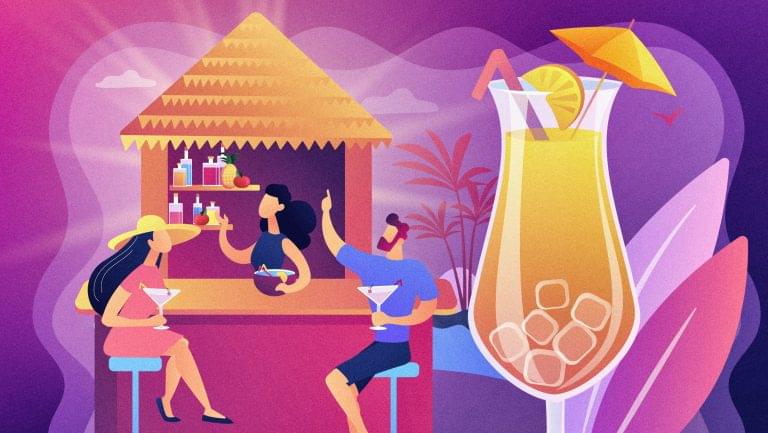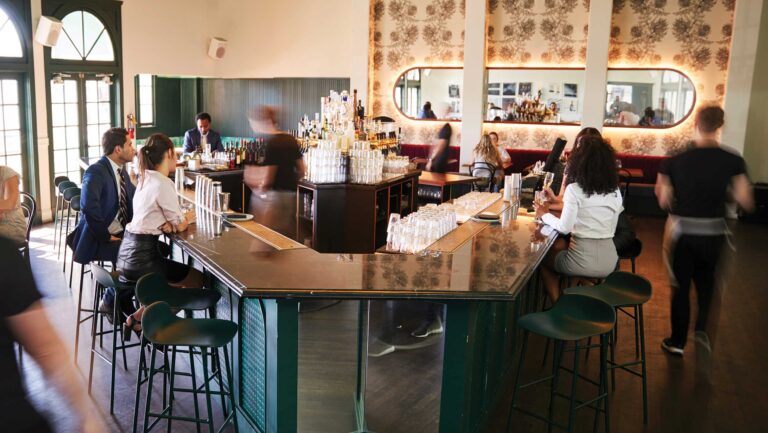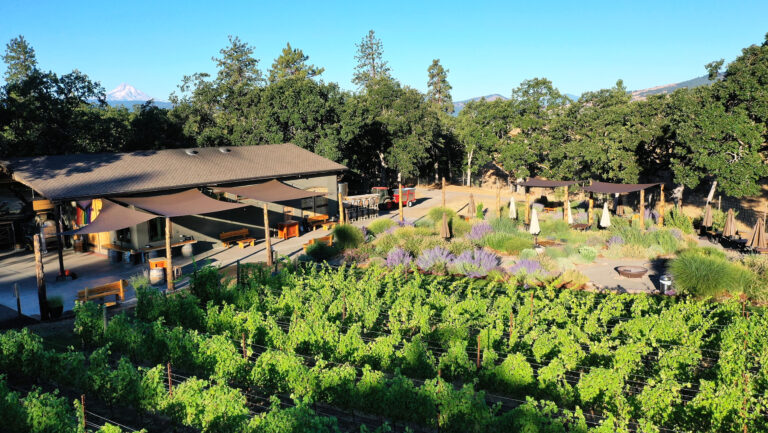Washington State’s San Juan Island is home to around 6,000 people most of the year. The population begins to swell in the summertime, though, and peaks over the Fourth of July weekend, when as many as 30,000 people are ferried onto the island’s shores, says Mike Sharadin, the owner of Mike’s Cafe and Wine Bar in Friday Harbor.
The fluctuations in population of popular seasonal vacation destinations can be enough to keep bars, restaurants, and retailers open even in areas without many year-round residents. But when 60 percent of business happens in just 70 days, as is the case for Sharadin, there are challenges. Operators in vacation destinations around the country offer advice on how beverage businesses can thrive in a boom-and-bust cycle.
1. Look at sales data from previous years.
“We really look at our historical data so we know what our trends are,” says Jenny Benzie, an Advanced Sommelier, Champagne taster, and the owner of Épernay Wine and Spirits in Nantucket, Massachusetts. “[We know] what sells, what doesn’t sell, and how much we need to order—and that makes a huge difference for us.” She relies on the store’s point of sale system for detailed reports.

Don’t miss the latest drinks industry news and insights. Sign up for our award-winning newsletters and get insider intel, resources, and trends delivered to your inbox every week.
Anticipating summer sales trends allows Benzie to buy strategically. “We purchase a lot in May, and then in June and July, we continue to keep those high bars,” she says. “After the end of July, we only buy what we need to. We are strategic about trying to recommend things that we know won’t move later.” Memorial Day weekend, for instance, accounts for much higher sales than Labor Day weekend because customers are stocking their bars for the summer. In the dwindling weeks of tourist season, people are more likely to buy only what they need for the weekend.

2. Study trends.
Year-round regulars may be happy to buy what they always drink. But as out-of-towners start arriving for vacations, they bring their own expectations and preferences. A few months before the busy season starts, Mike Carolan, the owner of Finest Kind Wine and Liquor in Montauk, New York, starts reading up on current trends so he can better anticipate what customers will want. “I have a lot of salespeople that I trust,” he says, “who will come in and tell me, ‘This is what we see coming. This is what we see happening in the city, and it’s probably going to come out to you now.’”
The trend that has stood out this year is canned wine and cocktails. “They’re getting to be a popular thing, especially with the millennial generation,” says Carolan. “They want something quick and easy to take to the beach.”

3. Offer existing workers more hours if adding staff isn’t possible.
Finding good permanent employees is a challenge for any business. Finding good seasonal help can be even harder, especially in places where the cost of living is high. “We hire a few more people in the summer, mostly for stocking,” says Carolan. But for the most part, he gives existing employees more hours during the summer.
Other operators follow a similar strategy. “The conventional wisdom in a community like this is to staff up for the summer,” says Peter Hale, who co-owns Maine & Loire and Drifters Wife, a natural wine store and a restaurant in Portland, Maine, with his wife, Orenda. “We kind of do the opposite. We run lean and hungry when we’re not busy, and everyone moves at lightning speed when we’re really busy.”
The important thing with such a schedule, Hale notes, is to make sure the existing staff members are both physically and mentally prepared for the busy season. “It’s such a grind that we tell our staff, ‘Don’t overcommit yourself on your days off,’” he says. The restaurant is closed two days a week so everyone can have time off without employees being asked to cover a shift during their rest time.
Sharadin hires additional people in the summer, which also gives him the option of changing his duties for a few months. “In the summer, I back off a given role and become almost a floater, looking for problems,” he says, in contrast to the winter, when he spends more time seating guests and waiting tables. “When you have a large group of less-trained employees, you need to just be more involved as a supervisor—not in a whip-snapping way but as a constant teacher.”
An added benefit is that this change gives Sharadin more time to chat with guests and learn where they’re from, what they want, and why they’ve chosen him over the competition. He says, “That helps me understand my business better.”

4. Understand your market—but stick to your mission.
Having a keen understanding of who is visiting can help businesses in vacation destinations adjust inventory accordingly. “In May we have the Nantucket Wine Festival one weekend, then Memorial Day the next weekend,” says Benzie. “Those are two very different crowds. We need fine wine for the first weekend, and the next weekend we’re bringing in a pallet of Bud Light 30-packs.”
Catering to the needs of customers can be harder for specialty shops. For the Hales, who carry only natural wine, summer is less about adjusting to their market and more about educating people and managing expectations. “You’re dealing with more people [in the summer],” says Orenda Hale, “and they have different attitudes and places they’re coming from. There’s a wider spectrum of what people expect.” In these circumstances, she emphasizes the importance of staying true to the mission of the business. “For us,” she says, “it’s more about making sure we work with integrity, trust our instincts, and only work with people we trust.”

5. Consistently overperform.
Sharadin regularly gives customers a taste of a beer or wine if they’ve never tried it before, or brings a bite of a dessert for someone who had trouble choosing between two. He says he once read an article about the high-end retailer Neiman Marcus, in which managers said the key to luxury branding is overperforming. “We’re in a resort town,” Sharadin says, “and frequently when you’re in a resort town, vendors have to charge more because you’re paying for January, February, and March. There’s a lot of overhead that a lot of people don’t grasp when they complain about an $18 sandwich. If you can overperform right next to that sandwich, [the customer] is not going to remember the price of the sandwich.”
6. Plan around events and weather.
Keeping track of upcoming events helps Benzie with seasonal planning, during both the summer and the shoulder season. Events can include formal gatherings, like the Nantucket Cranberry Festival in October; holidays, such as Columbus Day and Thanksgiving, when people tend to flock back to the island; and weddings, which are common throughout the fall.
In addition to planning around events, Carolan recommends keeping track of the weather. Right before placing his orders for the week, he’ll check the forecast to see if rain or sun is predicted. “If it looks like it’s going to be bad weather,” he says, “I’ll lower the amounts.”

Dispatch
Sign up for our award-winning newsletter
Don’t miss the latest drinks industry news and insights—delivered to your inbox every week.
Sophia McDonald is a freelance writer who lives in Eugene, Oregon. Her work has appeared in numerous publications and on websites, including Wine Enthusiast, Eating Well, Sip Northwest, and 1859 Oregon’s Magazine.







